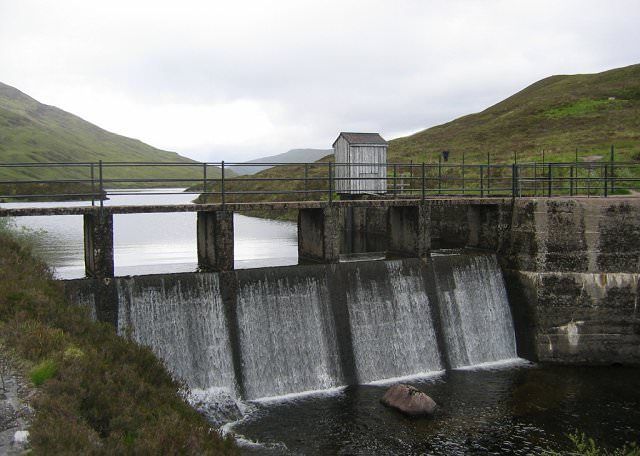Small Hydroelectric Dams Increase Globally With Little Research, Regulations
Published on by Water Network Research, Official research team of The Water Network in Academic
University of Washington researchers have published the first major assessment of small hydropower dams around the world — including their potential for growth — and highlight the incredibly variability in how dams of varying sizes are categorized, regulated and studied.
Hydropower dams may conjure images of the massive Grand Coulee Dam in Washington state or the Three Gorges Dam in Hubei, China — the world’s largest electricity-generating facility.

Small hydroelectric dam Dam, Loch Eilde Mor, representative image,
source: Wikimedia Commons
But not all dams are the stuff of documentaries. Tens of thousands of smaller hydroelectric dams exist around the world, and all indications suggest that the number could substantially increase in the future. These structures are small enough to avoid the many regulations large dams face, and are built more quickly and in much higher densities. As streams, rivers and watersheds absorb more small dams, however, surprisingly few scientific studies have considered their environmental impact, and policies or regulations are lacking or largely inconsistent.
University of Washington researchers have published the first major assessment of small hydropower dams around the world — including their potential for growth — and highlight the incredibly variability in how dams of varying sizes are categorized, regulated and studied. Their paper, the first to provide a global synthesis of the science and policy of small hydropower, appears this month in the journal Frontiers in Ecology and the Environment.
“As we started exploring this topic of small hydropower development, we realized we’re facing a proliferation of this kind of facility, but we don’t know exactly how their environmental impacts scale up in a watershed,” said lead author Thiago Couto, a UW doctoral student in the School of Aquatic and Fishery Sciences.
“We have identified some important gaps in policy and science that should be filled to better manage small hydropower dams and to have science that really informs policy.”
Dams, big or small, have the potential to change a river’s water flow, temperature, sediment, and ultimately the patterns in plant and animal diversity. These factors have been long-studied for large dams, yet have been largely ignored for small dams — especially considering the potential cumulative effects of many small dams in a single river system.
Their research reports that nearly 83,000 small hydropower plants are operating or are under construction in 150 countries. For every large hydroelectric dam, 10 small dams exist. If all hydropower capacity were to be developed, the study estimates that this number could more than triple.
Small hydropower can take many different forms. Some small dams are built to store water in reservoirs and then release water downstream, while others divert water away from rivers into powerhouses; in all cases water is used to turn turbines and create electricity.
One of the challenges the researchers faced in compiling these numbers is that countries define “small” hydropower plants differently. As such, there is no international standard with which to categorize and compare dams. Moreover, while the modifier “small” is assumed to equate with few environmental impacts, this is a largely untested notion.
Read full article: University of Washington
Read 'Global proliferation of small hydropower plants – science and policy' paper HERE
Media
Taxonomy
- Hydrology
- Hydropower
- Energy Efficiency
- Dams
- Efficiency Improvement
- River Engineering
- Energy Efficiency